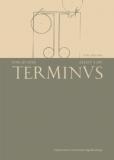Zabawy pobożno-wesołe warszawskich karmelitanek bosych. Bonawentura od św. Stanisława, Emblematy na obraz dziada – cykl z siedemnastowiecznego rękopisu karmelitańskiego
Pious and Merry Games of the Warsaw Discalced Carmelite Sisters. Bonaventure of St Stanislaus, Emblematy na obraz dziada—A Cycle from a 17th-Century Carmelite Manuscript
Author(s): Anna Nowicka-StruskaSubject(s): Library operations and management, Polish Literature, 17th Century, Biblical studies
Published by: Wydawnictwo Uniwersytetu Jagiellońskiego
Keywords: emblematics; religious literature; Baroque; religious orders; 17th-century literary culture; Discalced Carmelite Sisters; Polish prose;
Summary/Abstract: The research problem related to the achievements of religious orders in Poland in the early modern period is the incomplete knowledge of literary culture and reading preferences of religious communities in Poland in the 17th century. The popularity of emblems was particularly influenced by female readers and their reading preferences. This is exemplified by the addressees of the cycle presented below and the discovery of a previously unknown series of emblems of Bonaventure from St Stanislaus, born Stanisław Frezer (1638–1687). The cycle is included in the codex that belonged to Bonaventure, who also authored ascetic and theological writings from the Carmelite circle. The handwriting of the text indicates his authorship. The cycle was commissioned by Warsaw Carmelites, whose spiritual patron was Bonaventure of St Stanislaus. The creation of this series of emblems was connected with a kind of social play that the Carmelite nuns engage in during their monastic recreation in 1677.Seventeen short works were written by Bonaventure of St Stanislaus as complimentary to his painting depicting a beggar. The image, which has not survived to this day, and the circumstances of the creation of the emblem cycle were described in Frezer’s manuscript biography published in the same codex no. 243 held in the Discalced Carmelite Sisters’ Library in Cracow. The unusual inspiration of the character that belonged to the low culture is evidenced by subsequent works whose titles always evoke the attribute of the beggar, a characteristic feature of this character or his activity: Old age, Grey hair, Beard, Poverty, Coat, Cold, Hunger, Bag, Basket, Pot, Stilt or Stick, Singing, Name of God, Alms, God bless you, Prayers. The motto is biblical, usually partly localized. The subscription to the emblem provides a joint interpretation of the motto and the title, as well as a devotional instruction as to the conduct or devotional practice. Only one manuscript with this text has survived to date.
Journal: TERMINUS
- Issue Year: 20/2018
- Issue No: 4 (49)
- Page Range: 499-522
- Page Count: 27
- Language: Polish

